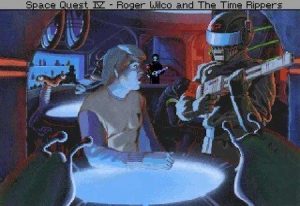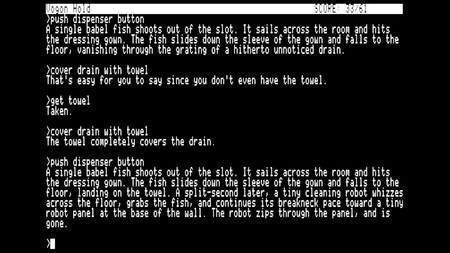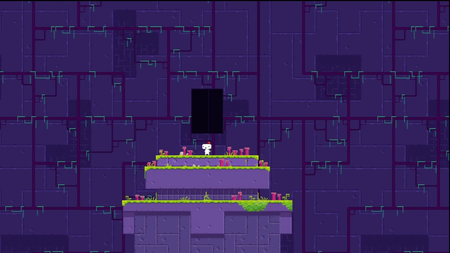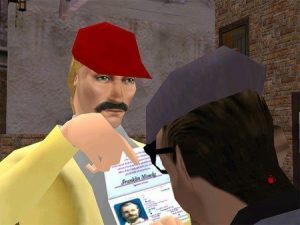Story, integration, graphics, whatever: The lasting legacy of the adventure game era were the puzzles. How do you a challenge a player when you’re not demanding technical optimization? Perhaps it was a question better left unasked. Kids killing Hydras with the square button in God of War never had a chance against the mental gymnastics required by your average PC adventure. I know, because I was one of them.
Adventure games stand as perhaps the most romanticized scene in the history of interactive entertainment, and while some of that is bullshit, it’s still possible to get lost in the nostalgia. So here are a few of the hardest puzzles I’ve ever encountered in gaming. I’ll fully admit to not solving the following trials when they were released, but it should stand as the best evidence for the adventure format’s relevance that the kids of today need to reach back into eras past for that psychotic mental buzz that just doesn’t exist in our modern, Mountain Dew world.

I’d be lying if I said I didn’t play King’s Quest for historical context more than anything else. A voice-actor-free, base-colored, brutishly difficult adventure game is a hard sell for these modern times, but still, our progress might still be halted if it wasn’t for Roberta Williams. She’d go on to make much better games, but the original King’s Quest was her origin, and her origin had a gnome. This gnome was named Rumplestiltskin.
The premise was simple. Say his name backwards. Easy. Nikstlitselpmur! Nope, sorry, try again. Have you forgotten where you were? This is adventuregameland—your petty linear logic has no quarter here. In King’s Quest you were expected to create a bizarre, replacement-based alphabet, where A took the place of Z, B with Y, and so on. The answer to this particular sanity-tarnishing puzzle was Ifnkovhgroghprm. Yes, Ifnkovhgroghprm was a word a videogame expected you to come up with in a pre-Google world. I honestly don’t know how any of you 70s babies did it.

Here is a maze. Here is a maze with no walls. Here is any direction you can think of. Are you overwhelmed yet? Good. Let the walkthrough flow through you.

Broken Sword is my favorite adventure game. It’s a Disney-quality bouquet, the first hint of the dream that videogames could play with your heart. It’s gorgeously illustrated, beautifully acted, and difficult without being too demanding or overbearing. In fact, if it wasn’t for one uber-specific lapse in game design, Broken Sword might be as beloved as, I don’t know, The Legend of Zelda.
There is nothing wrong with a hard puzzle. But when that hard puzzle is hard because it introduces a gameplay concept completely unique to the situation, it feels like one of the greatest injustices in life. For instance, if you’ve rubbed everything in your inventory against a goat that’s preventing you from getting to your next objective in the context of a slow-paced adventure game, it’s a tiny bit ridiculous to expect us to wait for said goat to make a fairly insignificant animation and click on a fairly useless-looking piece of farming equipment. This was the only time-sensitive puzzle in the entire game and it continues to bring people to their knees to this day. A meddling goat—the one thing still holding Broken Sword back.

Sometimes a game can go beyond tediousness or difficulty and begin to approximate something that appears unmistakably sinister. Like giving a player three shots to set up a room in EXACT ORDER so it successfully ricochets an alien fish into the player character’s ear. This is not okay, and in the era of tabbed walkthroughs, it makes gaming in the 80s seem like the fucking wild west.

Remember when Fez was a tech demo? Remember when its 2D/3D mashup was “the thing” about this game? Remember when cosmic conspiracy theories were the last thing you’d ever associate with this game? Those were simpler times, in the salad days of underestimating Phil Fish. When a bouncy little platformer couldn’t have been imbued with the cryptography that brought the internet to its knees.
That monolith, man. It was eventually solved through the community’s brute force, but I don’t know if it was ever figured out properly, or completely. There’s probably some other, deeper, more secretive puzzle within that solution, locked away in the depths of Fish’s gleeful insanity, still waiting for the solution of its own to be discovered, its mystery hanging anxiously in the background.

Riven is the closest videogames will ever come to a Zen koan—keen, prescient, requiring the full, undivided focus of its player. The sounds matter in this game. If you’re not paying attention to the subtle clicks and shifts, Riven will lock you out.
I won’t go into exactly what makes The Stone Circles so special, but it’s one of the few puzzles that legitimately feels like a final boss. It takes precision and attention to detail you might not find in your average neurosurgeon. They don’t make ‘em like this anymore, and that might be for the best.

Books could be written about this puzzle. Its legend is permanently inscribed for future generations. You had to draw a moustache on the ID and then tape cat hair to your face to fake a moustache that wasn’t even originally on the ID. And that is what killed adventure gaming.
But not really though, because I can tell you as a child born in 1991, I was enchanted by the moustache puzzle. In fact the only reason I initially dipped into the Gabriel Knight franchise was to bear witness to the lapse of design that begat such an immortal reputation. It’s the only puzzle in videogame history so obtuse that it’s actually become a tourist attraction.